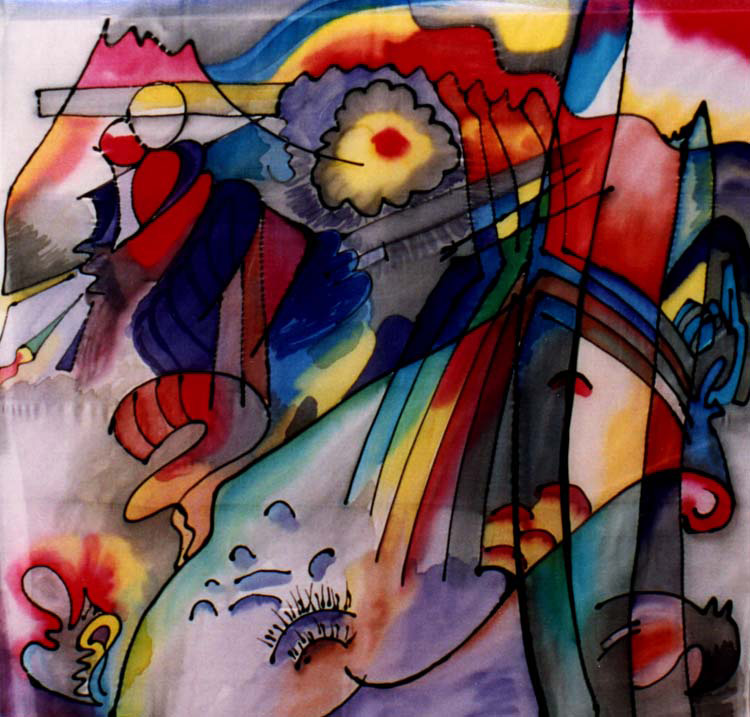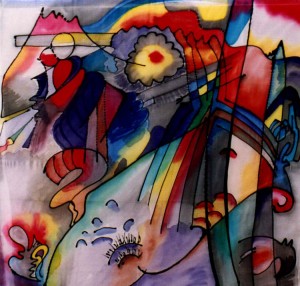Born December 16, 1866 Wassily Kandinsky was a hugely influential painter and art theorist credited with painting one of the first purely abstract works of art First Abstract Water Colour in 1910 . What’s less well known are his spiritual interests which influenced by Theosophy and most overtly expressed in the second chapter of his first book on art theory “Concerning The Spiritual In Art,” the chapter entitled “Spiritual Revolution.”
Further, as author Gary Lachman points out in his article “Kandinsky’s Thought Forms and the Occult Roots of Modern Art” (https://www.theosophical.org/publications/1405):
“As Sixten Ringbom made clear in his seminal study, “The Sounding Cosmos,” Kandinsky was deeply interested in a number of occult, mystical, and paranormal pursuits and, at times, was a practitioner of various spiritual disciplines, specifically some forms of meditation and visualization. His interest was wide and his reading eclectic; one form of paranormal phenomena that particularly intrigued him was ‘thought photography,’ the idea that thoughts could be captured on sensitive plates.” This phenomena not being unrelated to how Kandinsky eventually came to the view the process of painting for the true artist.
Lachman also points out: “Kandinsky’s occult library was considerable, but certain books in particular fuelled his speculation. Three key works were Man, Visible and Invisible (1902) by C. W. Leadbeater, Thought-Forms (http://www.anandgholap.net/Thought_Forms-AB_CWL.htm) (1905) by Annie Besant and Leadbeater, and Rudolf Steiner’s Theosophy (1904).”


